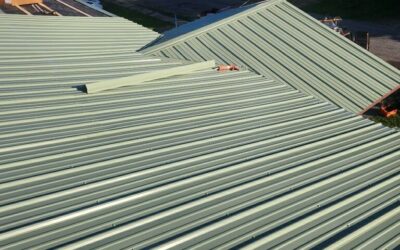The Ultimate Guide to Synthetic Felt Roofing Underlayment by S&K Construction And Remodeling LLC
Introduction
When it comes to roofing, every component plays a crucial role in ensuring longevity, durability, and overall protection for your home. One of the most important but often overlooked elements is the underlayment. Traditional roofing felt has long been used as a protective barrier, but in recent years, synthetic felt has become the go-to choice for contractors and homeowners alike. At S&K Construction And Remodeling LLC, we specialize in high-quality roofing solutions, including the installation of premium synthetic felt underlayment. In this guide, we’ll explore the benefits, types, and installation of synthetic felt, and why it’s a superior choice for your roofing project.
What is Synthetic Felt Roofing Underlayment?
Synthetic felt roofing underlayment is a high-performance, durable, and water-resistant material placed between the roof deck and shingles. Unlike traditional asphalt-saturated felt, synthetic underlayment is made from woven polyethylene or polypropylene, making it lighter, stronger, and more resistant to weather elements.
Advantages of Synthetic Felt Over Traditional Roofing Felt
If you’re considering a new roof or a replacement, synthetic felt offers several advantages over traditional felt underlayment:
1. Superior Durability
- Synthetic felt is tear-resistant, making it a more reliable option for withstanding harsh weather conditions, heavy foot traffic, and installation stress.
- Unlike traditional felt, which can become brittle over time, synthetic felt maintains its integrity longer.
2. Water Resistance and Moisture Protection
- Traditional felt can absorb water, leading to potential mold growth and weakening over time. Synthetic felt, however, repels water, keeping your roof deck dry and structurally sound.
- It provides an extra layer of protection against leaks and ice dams.
3. Lightweight and Easy to Install
- Synthetic underlayment is much lighter than traditional felt, making it easier to handle and install.
- Larger rolls cover more area per roll, reducing the need for frequent overlaps and seams.
4. UV Resistance
- Many synthetic felt options offer UV protection, allowing them to be exposed to sunlight for longer periods without breaking down. This is beneficial if roofing materials aren’t installed immediately.
5. Increased Safety
- Synthetic felt provides better traction for roofers during installation, reducing the risk of slips and falls.
- Some brands incorporate slip-resistant coatings for added worker safety.
6. Extended Roof Lifespan
- By offering superior protection against moisture and UV exposure, synthetic felt helps extend the lifespan of your entire roofing system.
Types of Synthetic Felt Roofing Underlayment
Several types of synthetic underlayment are available, each designed to meet specific needs. Here are the most common types:
1. Standard Synthetic Felt
- Designed as a general-purpose underlayment, this type offers solid water resistance and durability.
- Suitable for most residential roofing applications.
2. High-Temperature Synthetic Felt
- Ideal for metal and tile roofs where high temperatures can degrade traditional underlayment.
- Made with materials that can withstand prolonged exposure to heat.
3. Breathable Synthetic Felt
- Allows moisture vapor to escape while maintaining water resistance.
- Helps prevent condensation buildup, making it ideal for humid climates.
4. Self-Adhering Synthetic Felt
- Features an adhesive backing that sticks directly to the roof deck.
- Provides an added layer of water resistance and is useful in high-wind areas.
The Installation Process of Synthetic Felt
At S&K Construction And Remodeling LLC, we follow a precise installation process to ensure maximum performance and protection for your roof:
Step 1: Roof Deck Preparation
- Before installing the underlayment, we inspect the roof deck for any damage or irregularities.
- Any necessary repairs are made to ensure a smooth, solid surface for the underlayment.
Step 2: Laying Out the Synthetic Felt
- The synthetic felt is rolled out horizontally across the roof deck, starting from the eaves and working upward.
- We ensure proper overlap to create a seamless, watertight barrier.
Step 3: Securing the Underlayment
- Depending on the type of synthetic felt used, we either staple, nail, or adhere the material in place.
- In high-wind areas, cap nails or plastic caps may be used for extra holding power.
Step 4: Flashing and Additional Sealing
- We install flashing around roof penetrations like vents, chimneys, and skylights to prevent water intrusion.
- Additional sealing measures are taken to ensure a fully protected roof.
Step 5: Final Inspection
- Our team conducts a thorough inspection to verify proper installation before proceeding with shingle installation.
Why Choose S&K Construction And Remodeling LLC for Your Roofing Needs?
Choosing the right contractor is just as important as selecting the best roofing materials. Here’s why homeowners trust S&K Construction And Remodeling LLC for their roofing projects:
- Experienced Professionals: Our skilled team has extensive experience in roofing installation, ensuring high-quality workmanship.
- Premium Materials: We use only the best synthetic felt underlayment products to provide lasting protection.
- Competitive Pricing: We offer affordable pricing without compromising on quality.
- Customer Satisfaction: Our commitment to excellence means every project meets or exceeds industry standards.
- Local Expertise: As a trusted contractor in Youngstown and surrounding areas, we understand the specific roofing needs of our community.
Frequently Asked Questions About Synthetic Felt
1. Is synthetic felt better than traditional felt?
Yes, synthetic felt offers superior durability, water resistance, and ease of installation compared to traditional felt.
2. Can synthetic felt be left exposed to the elements?
Most synthetic underlayment products have UV resistance and can be left exposed for weeks or even months, depending on the brand. However, it’s best to install roofing materials as soon as possible.
3. How much does synthetic felt cost?
While synthetic felt is slightly more expensive than traditional felt, its longer lifespan and superior performance make it a cost-effective choice.
4. Does synthetic felt require special fasteners?
Many synthetic underlayment products require plastic cap nails or staples for secure attachment, ensuring they stay in place during installation and harsh weather conditions.
5. Can synthetic felt be used on all types of roofs?
Yes, synthetic felt is compatible with most roofing materials, including asphalt shingles, metal, tile, and slate.
Conclusion
Synthetic felt roofing underlayment is a game-changer in the roofing industry, offering superior protection, durability, and ease of installation compared to traditional felt. If you’re planning a roof replacement or new installation, investing in high-quality synthetic felt is a smart decision. At S&K Construction And Remodeling LLC, we take pride in delivering top-notch roofing solutions that ensure the safety and longevity of your home.
Call to Action
Ready to upgrade your roofing system with high-performance synthetic felt? Contact S&K Construction And Remodeling LLC today for expert installation and professional roofing services. Let’s build a stronger, more durable roof for your home!
 (440) 307-2060
(440) 307-2060


